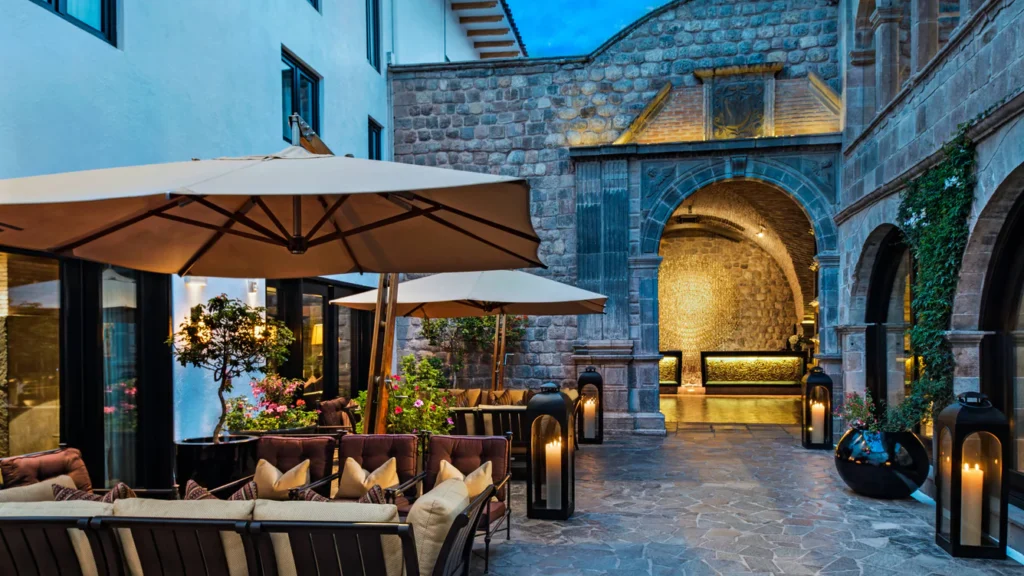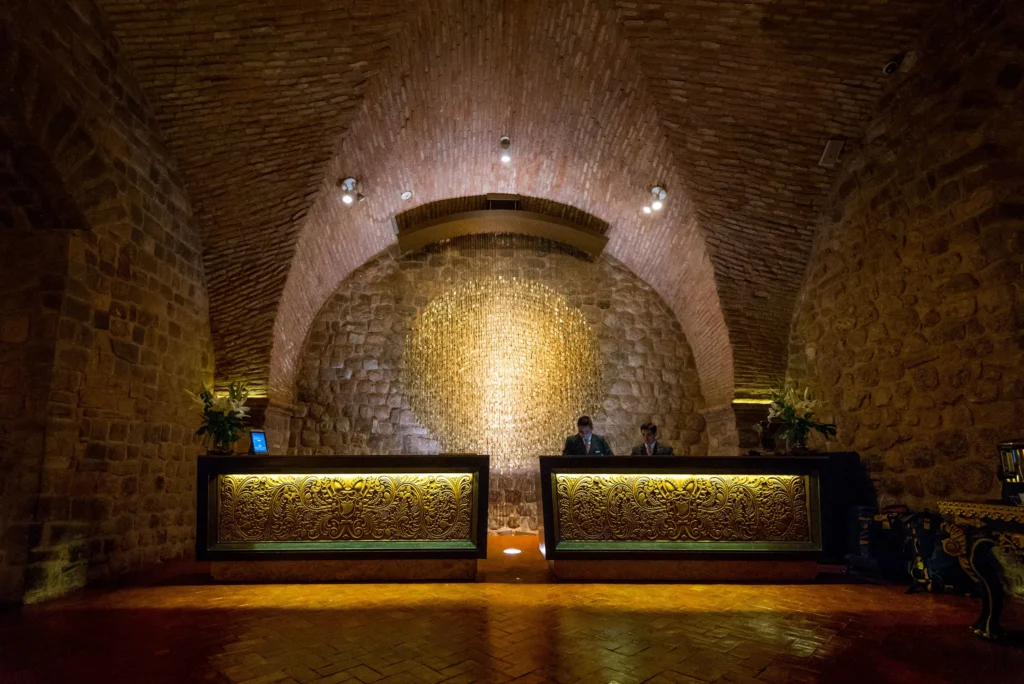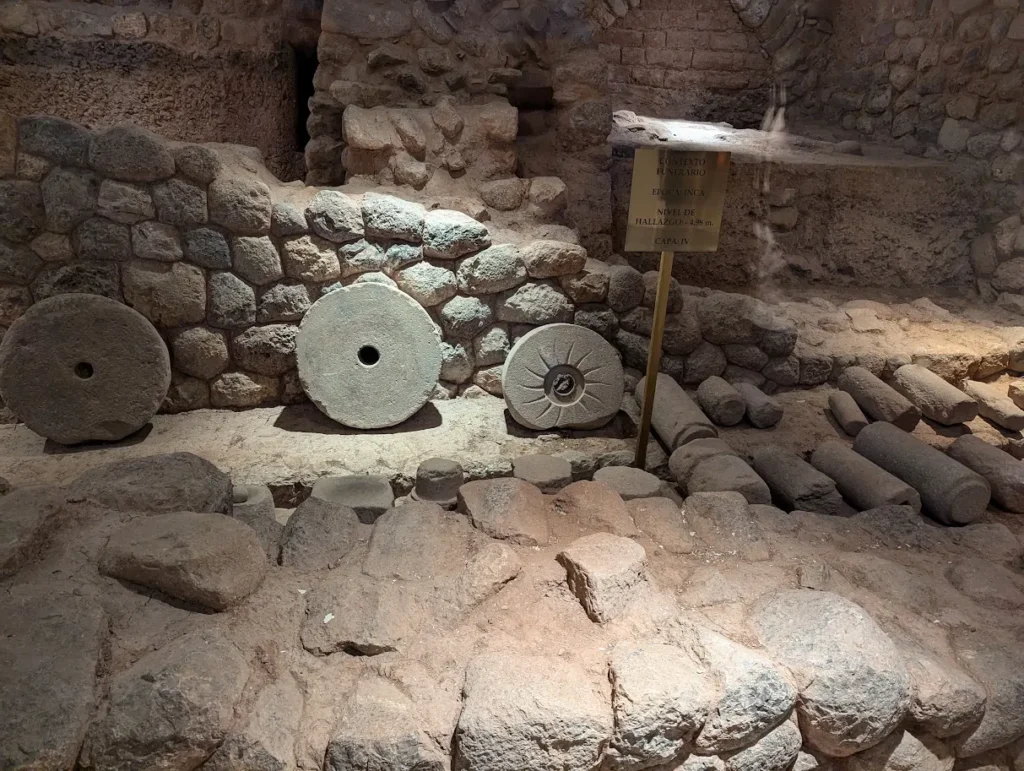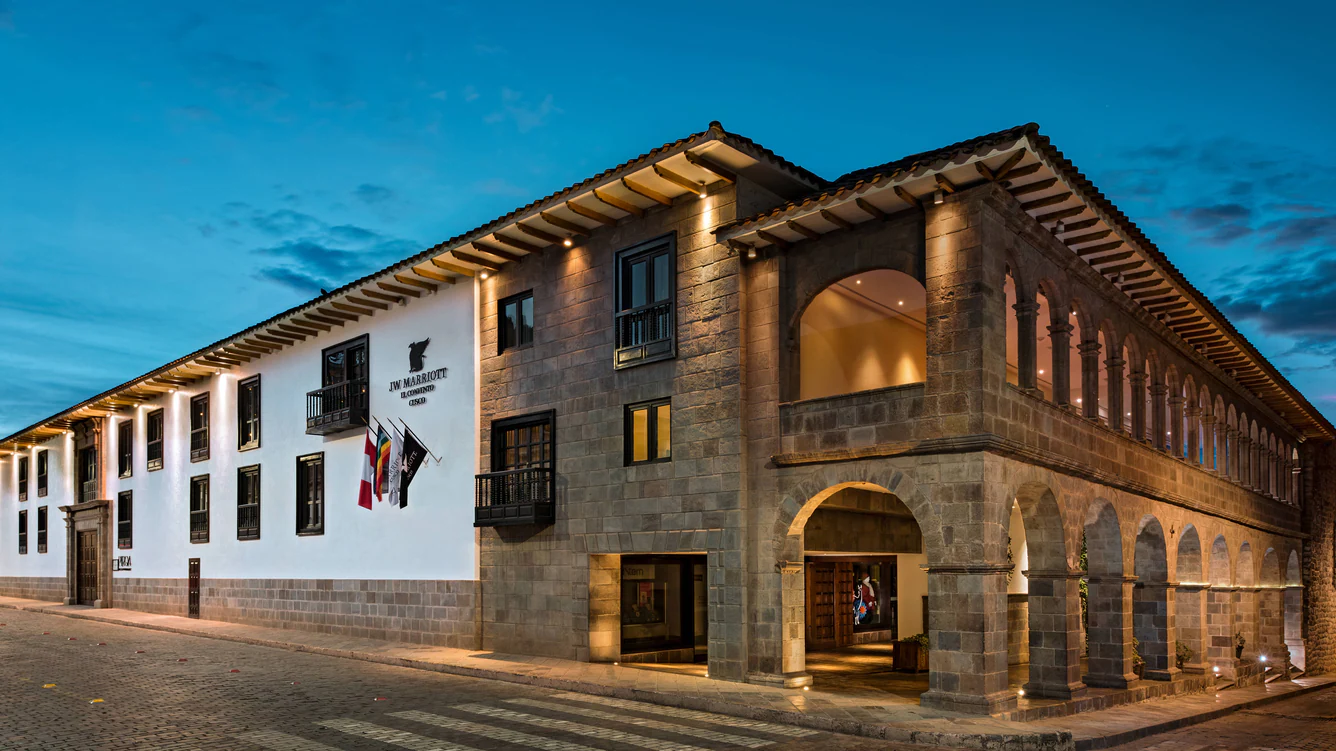JW Marriott Hotel Convento
Cusco
Peru
In 2010, the global hotel chain JW Marriott embarked on an extensive, three year restoration of a 16th-century Catholic convent in the heart of Cusco, Peru. This historic structure was built atop an Incan ceremonial site which required thoughtful and painstaking preservation of ancient ruins and artifacts from both Inca civilization as well as earlier cultures. Today, the hotel stands as a testament to the value and importance of “adaptive reuse architecture,” which focuses on preserving and repurposing historically significant buildings.
The second leg of our 18-day adventure to the sacred site of Machu Picchu began with a four-night stay at the meticulously restored JW Marriott Hotel Convento Cusco, located just blocks from the vibrant heart of the city and the historic Plaza de Armas. After four days in the chaotic, high energy city of Lima, Cusco was exactly the change of pace we were looking for. Though lively in its own way Cusco offered a considerably more relaxed and laid-back tempo.
Entering through an outdoor courtyard into the the beautifully restored central lobby we were greeted by the El Convento’s affable staff who immediately treated us as though we were family. Along with the warm welcome we were invited to enjoy various teas displayed on an intricately carved side table, including coca leaf tea, which is known to help alleviate altitude sickness, headaches and nausea while providing a mild stimulant effect. Having arrived hours earlier from the City of Kings, which rests at an altitude of 500 feet above sea level to Cusco’s considerably higher altitude of 11,200 feet, we needed little encouragement to try to coca leaf tea!

Check in was a breeze and soon we were escorted to our second floor room overlooking the central courtyard. Filling in between the arched corridors of the four balconies were multiple flower boxes cascading with geraniums, petunias, and begonias.
Our room was impeccably appointed, featuring a blend of colonial-style furniture, two double beds along with ample space to relax. The balcony outside offered two oversized chairs, providing the perfect spot to enjoy a morning cup of tea or an afternoon glass of wine while watching the activity in the courtyard below. Although our room was oxygen-enriched, we occasionally reached out to the attentive staff to provide additional oxygen assistance, which they were more-than-happy to provide.
Glancing up from the balcony outside our room we noticed several retractable fabric screens which resembled oversized bed sheets hung out to dry in the midday sun. While the sheets could have easily been mistaken for a Jeanne-Claude Christo installation they actually function as a sun block allowing light to enter the courtyard. Architecturally, it offers a simple yet elegant solution for managing the intense midday sun, while allowing guests to enjoy the night sky when the sheets are drawn closed at sundown.

After settling in we retreated to the Qespi Restaurant and Bar for a light lunch and a pisco sour. Qespi Restaurant and Bar, situated in the heart of the original convent, is a renowned culinary destination in Cusco. The restaurant offers a blend of contemporary cuisine infused with the rich culinary traditions of the Andes. Guests can choose from several dining areas, including the charming outdoor courtyard, a cozy fireplace-lit dining room, or the lively main bar area. There is also in-room dining should guests prefer the privacy of their room. Breakfast is served buffet-style, with an extensive variety of delicious options catering to a wide range of tastes. Like the rest of the hotel staff, the restaurant team consistently receives high praise for their attentiveness and warmth, always making us feel like family rather than just visitors.
Pampering can be enjoyed in a variety of forms as the El Convento Hotel offers a full-service spa with numerous treatments and therapies including traditional Peruvian healing rituals and massages. There is also an intimate pool, jacuzzi and dry sauna area adjacent to the spa. The hotel also offers a complete range of concierge services, including guided tours to nearby attractions like Machu Picchu, the Sacred Valley, and other historical sites.

Throughout the convent there are many artistic treasures, including colonial furniture, paintings, sculptures, restored murals, and frescoes, as well as vibrant woven tapestries, handwoven rugs, and intricate fabric wall hangings. Every day local weavers set up shop in the courtyard, demonstrating techniques that have been passed down through generations. Using alpaca and sheep wool, these master artisans showcase their remarkable skill and cultural heritage through textiles, such as blankets, scarves, ponchos, and tapestries.
Our first encounter with one of the hotels more stunning pieces of art came as we were checking in. Behind the front desk is a 10-foot wide iridescent, one-of-a-kind “sculpture of light” that appears to levitate against a backdrop of rough-hewn stones. Crafted in Austria from 76,500 Swarovski crystals this breathtaking and luminous masterpiece pays homage to Inti, the Incan God of Sun, which adds layers of cultural significance to its mesmerizing beauty. The radiant glow of the sculpture bathes the entire room in a soft, golden light, creating a hypnotic effect making it nearly impossible to look away.

Nowhere is the intersection of El Convento’s history, art and culture more apparent than a guided tour. Our guide, Jesús, set the perfect tone as he entered the lobby dressed as an Augustinian monk, holding a lantern and a small brass bell. He began the tour with a detailed account of the painstaking efforts required to renovate the lobby and the convent. As he spoke, he emphasized the many architectural, bureaucratic, and financial challenges that needed to be overcome to complete the project.
Our next stop was the subterranean level of the hotel, where several glass-walled exhibits showcased Inca stonework, including foundations, walls, and water channels, alongside various artifacts from daily Inca life. It was a fascinating journey into both pre-Inca and Inca history, serving as an excellent primer for our forthcoming adventure to Machu Picchu.

While it is easy to appreciate the splendor and beauty of El Convento, one cannot overlook the herculean challenge of restoring a crumbling 16th-century building while simultaneously uncovering and meticulously preserving its countless artifacts and ruins. The complex six-year restoration brought together the collective expertise of Peruvian architectural firms, local archaeologists, cultural preservationists, and skilled artisans, as well as multiple contractors specializing in adaptive reuse projects.
Overseeing the renovation was the Peruvian Government in collaboration with the Ministry of Culture. Their combined involvement ensured that the protection of cultural heritage remained a top priority. And last, but certainly not least, Marriott International spearheaded and guided the project to completion, demonstrating their unwavering dedication to honoring the site’s cultural and historical significance. Their efforts resulted in one of the most unique and stunning properties in their global portfolio.




